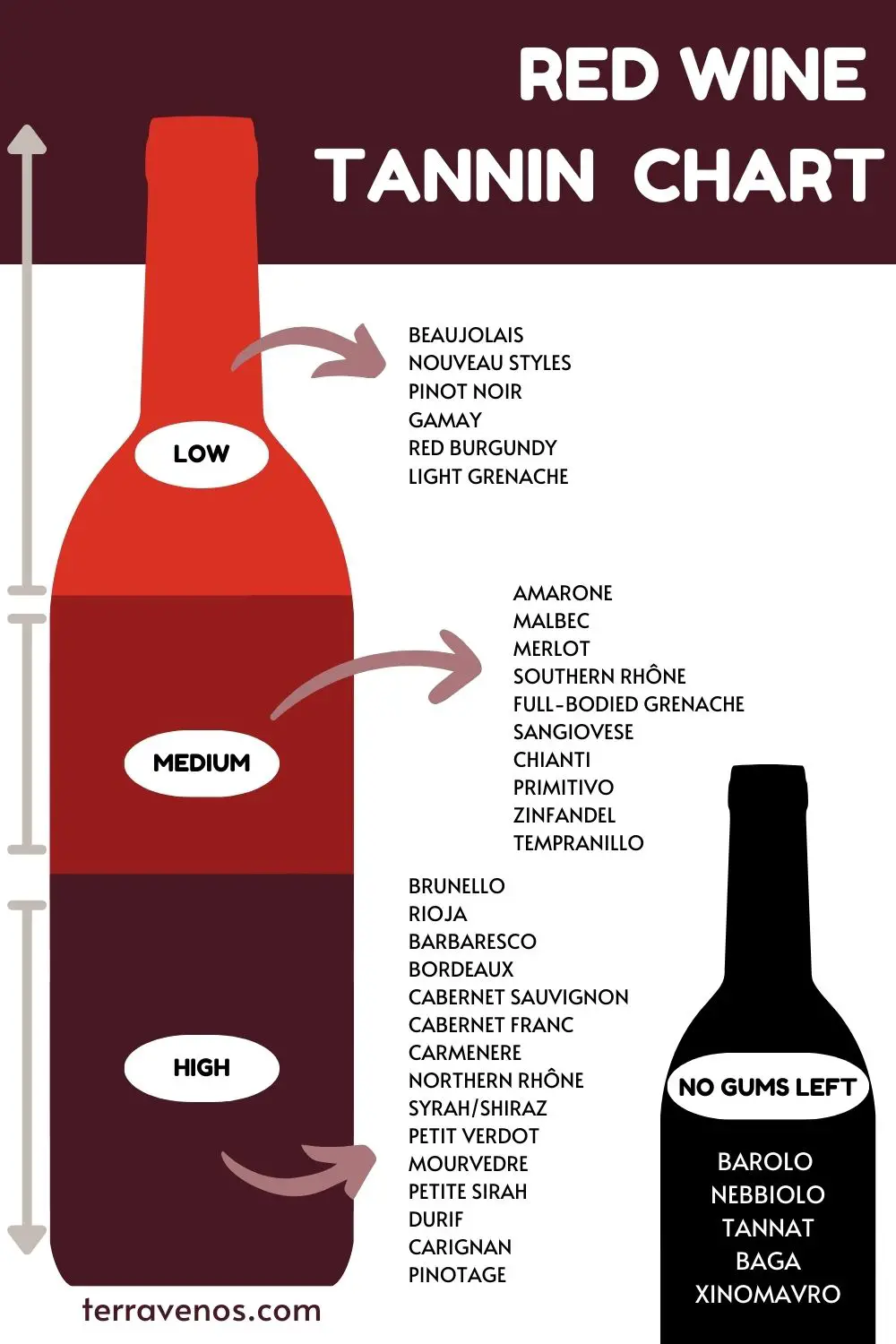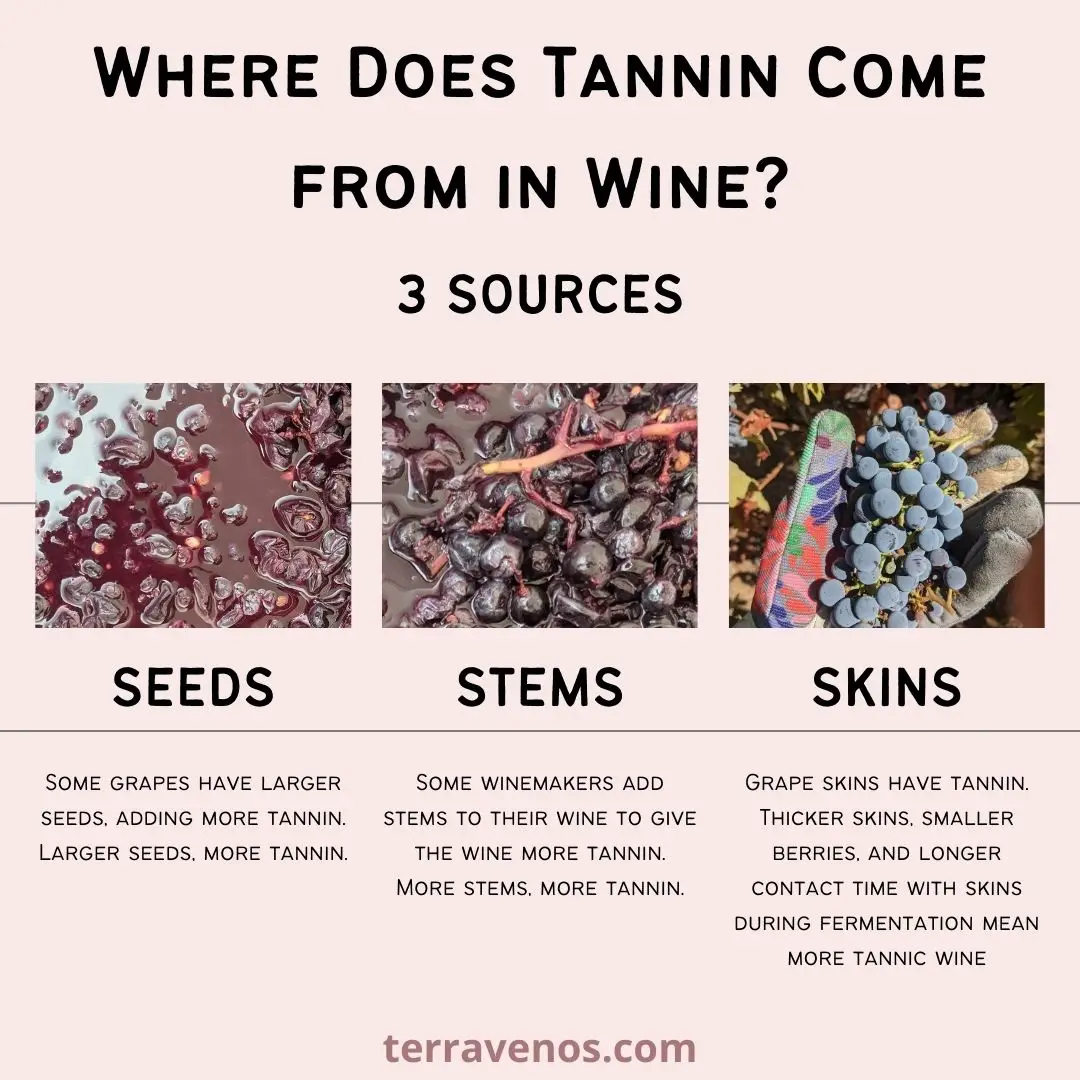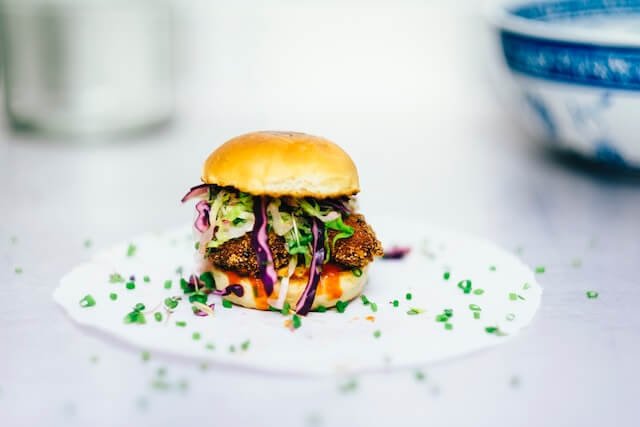
Red Wine Tannin Chart
Check out the chart above that gives an at-a-glance visual of what wines have low, medium, high, and very high tannin levels.
Here’s what you need to know about red wine tannins in the chart above.
Where Do Red Wine Tannins Come From?

Wine tannin comes from three sources: seeds, stems, and skins.
- Seed Tannin: Seeds are tannic. You know this if you’ve ever eaten a grape seed. Some grapes, like Baga, have larger seeds meaning there will be more of them and the wine will be more tannic.
- Stem Tannin: Grape stems are woody. Most winemakers will de-stem their red wine grapes before fermentation. However, some stems will still make it into fermentation. Other winemakers deliberately ferment their wines with the stems to give the wines more tannin. Pinot Noir is a classic example where winemakers leave some or all of the stems in contact with the wine to give it more tannin because Pinot Noir is a naturally low-tannin wine.
- Skin Tannin: Grape skins are tannic. Thicker-skinned grapes, smaller berries, and longer contact time with the wine through fermentation will lead to more tannic wines. Tannat is a great example of a thick-skinned berry.
Helpful Tip: Winemaking practices can alter the amount of tannin from stems and skins. This is why it’s impossible to say “All Pinot Noirs have low tannin,” for example.
Why Tannins Are Good (And Good for You)
Tannins in red wine are a good thing for several reasons:
- Tannins are a known antioxidant.
- Tannins are antimicrobial, protecting the wine.
- Tannins help preserve wine, along with acid and alcohol.
- Tannins help wine age.
Does High Tannin Mean High Alcohol?
No, high tannin wines don’t necessarily mean high alcohol wines. High alcohol comes from sugar accumulation in the grapes. Riper grapes mean you’ll have wines with higher alcohol.
Helpful Tip: Curious? Check out this list of wines with their alcohol levels from around the world.
How to Taste Tannins
Tasting tannins is a fun activity. Head over to this 30-second tannin tasting experiment to get started (psst… you’ll need a bottle of red wine. Any red wine works!)
High Tannin Wine Pairing Tips

High tannin wines pair well with fat and protein. The molecules in high-fat and high-protein foods will bind with the tannin molecules in your mouth canceling out the overly-drying sensation you feel. Here are some classic foods to pair with high tannin wines:
- Black olives
- Roast beef cuts
- Cheddar cheese
- Salted nuts
Helpful Tip: Here’s a list of what NOT to pair with high tannin wines.
Red Wine Tannins vs White Wine Tannins
Red wines will always have some level of tannins. White wines typically do not. However, some winemakers experiment with skin-contact and barrel aging with their white wines. Both of these can impart texture to your white wine.
Helpful Tip: Orange wines will always have tannin. Here’s what you need to know about orange wines.
Thirsty for More?
Check out this list of big red wines if you love tannic reds.
More of a light red fan? Here’s a list of light red wines just for you.




